According to the latest figures from Germany’s intensive care register on Monday, 4,143 people with coronavirus are currently being treated in intensive care.
This is an increase of 92 on Sunday’s figures.
Around 56 percent of the Covid-19 patients in intensive care were on ventilators.
Out of Germany’s total of 23,600 usable intensive care beds, 3,771 were free, including 1,457 Covid-specific intensive care beds.
The pictures below show how the situation varies in different parts of the country:
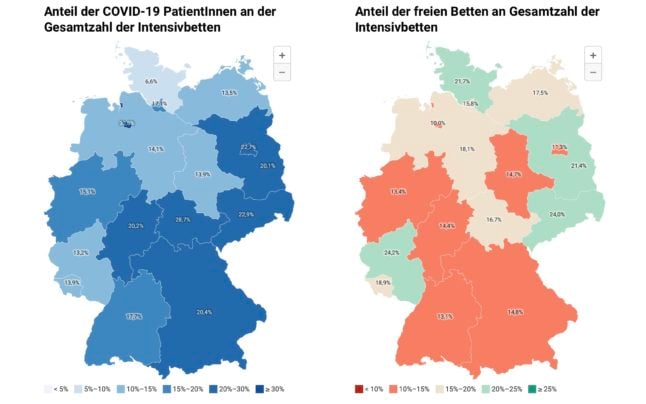
The left-hand map shows the proportion of total adult intensive care beds occupied by Covid-19 patients, while the one on the right shows the percentage of unoccupied intensive care beds as of April 5th.
The figures are based on the most recent data from the last seven days.
The number of coronavirus patients in intensive care units peaked at over 5,500 cases at the start of January in the second wave, dropping to below 3,000 patients at the start of March.
The below chart from Germany’s DIVI intensive care availability register shows the number of patients with Covid-19 that have been treated in intensive care from the start of pandemic.
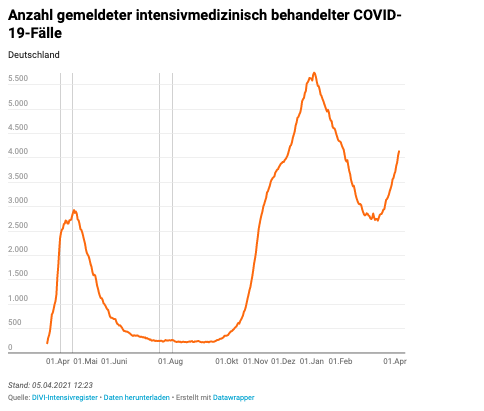
As depicted in the above chart, Germany’s third wave has seen infections increasing again since around mid-March, ramping up pressure on hospitals.
Calls have been growing for Germany to take tougher action to stem the tide of new infections and take the pressure off hospitals.
READ ALSO: Is Germany heading for a tougher Covid lockdown?
On Easter Monday, Germany’s Robert Koch Institute’s daily situation report showed 8,497 new Covid-19 infections and 50 new deaths in the last 24 hours.
The actual numbers may be even higher as the RKI said that generally, fewer tests are carried out and reported over public holidays, such as Easter.
The number of new infections per 100,000 residents stood at 128 on Monday, just above Sunday’s 127, and a sharp increase from three weeks ago, when the figure stood at 83.
However, as further case reports come in, RKI revises the figure up or down accordingly.
In the last few weeks, values reported at the start of the week have typically been revised slightly higher, Germany’s public health body said.
As shown in the below chart from the Robert Koch Institute, the seven-day R value (in pale orange), or reproduction number, is around 1.
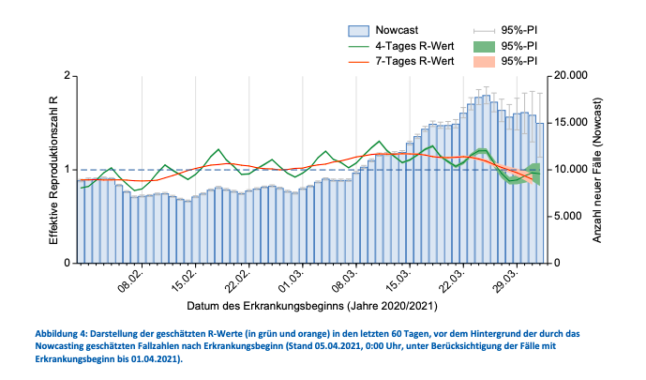
This means that, on average, every 100 infected people will pass the virus on to a further 100 people.
When the figure is below 1 for a longer period of time, it means the epidemic is shrinking. But when the number is above 1, an outbreak can grow exponentially.
The blue columns show the number of new cases, highlighting the rising trend established in mid-March.

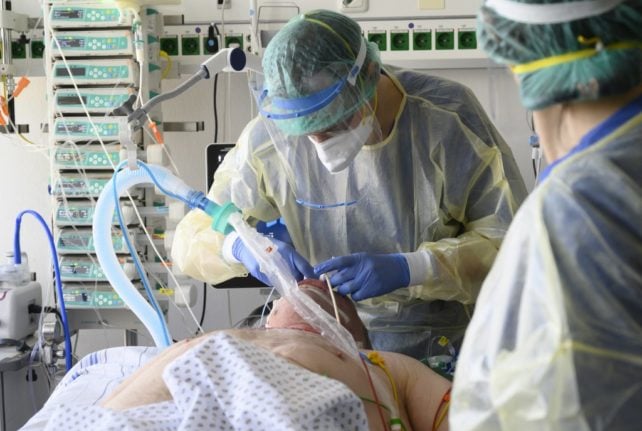
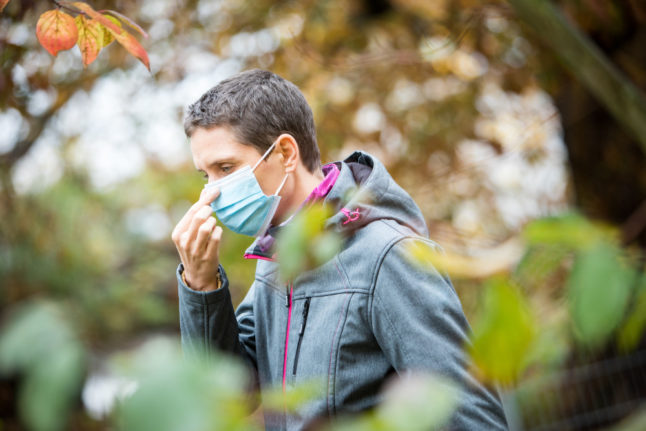
 Please whitelist us to continue reading.
Please whitelist us to continue reading.
It would be wonderful if there were more context to your articles. For example, what is the ICU patient load typically like during this time of year? Trends over the past 5 years? –including 2019 when Germany experienced an exorbitant number of flu cases. These numbers don’t mean anything without perspective.